How to properly transplant thuja to a new place?
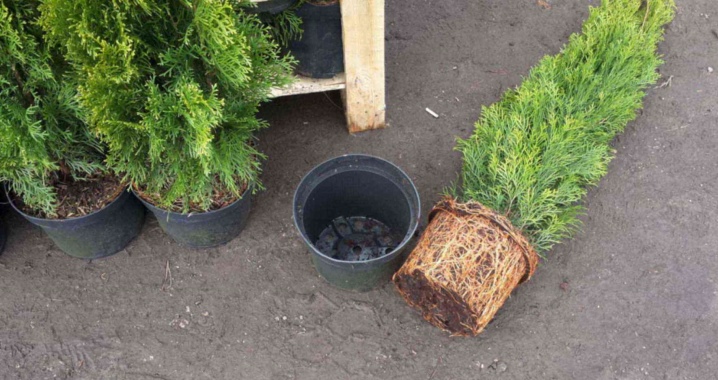
Thuja is a plant that does not differ in whimsicality, feels great in an urban environment. It is loyal to various types of soil, reacts positively to pruning. Thuja can become part of a plant composition or hedge.
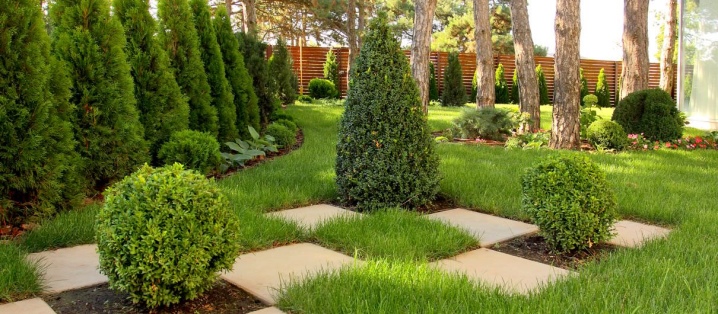
What is a transplant for?
This unpretentious evergreen plant is often chosen for planting on its site. It usually tolerates a transplant without problems. The procedure itself is not complicated, so almost everyone can handle it.
There are several reasons for a thuja transplant.
- Reaching the age of 5 years. When a plant propagates, young seedlings are first placed in a school, in a temporary place. At the age of five, replanting the tree is best, since it is already strong enough. It can be transferred without injury to where it will grow constantly.
- Digging up a thuja growing in a different place in order to plant it on your site. In this case, the duration of the preparation activities will be longer.
- The poor condition of the plant, which is a consequence of the wrong choice of the place of its growth. A strong cold wind can harm frost and drought-resistant thuja, and if the site is blown from all sides, then the tree should be transplanted.
- Transplant for the formation of a green hedge or landscape composition.
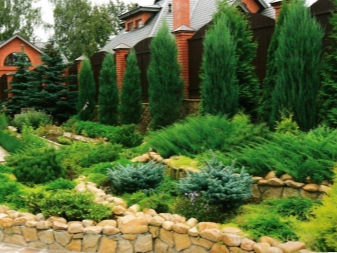
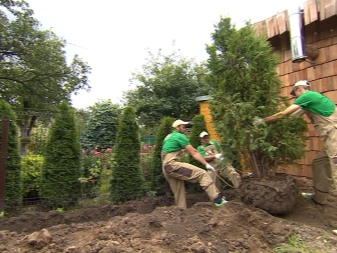
The right time
Thuja can be transplanted in almost any period of the year, except for the winter one. But it is better to do the work in March, April or October, it is this time that is considered the most favorable. The beginning of autumn is the period when there is no frost yet, so the tree can take root in a new place, winters well and be ready to grow next year. If you transplant in late autumn, then the root system, most likely, will not have time to properly gain a foothold in the ground. However, at this time, you can transplant plants in the southern regions, where the climate is warmer.
There are significant differences between planting a young and an adult thuja. Young growth in this regard is less problematic and does not require much care from a person. Manipulations on such plants are practically not reflected.
It is much more difficult to work with adult representatives of the flora, since it is worth preparing the landing hole and bayonetting the soil well in advance. The easiest way is to transplant a plant from a pot. For him, you only need to dig a hole, at the bottom of which to place drainage, and then fill it with soil.
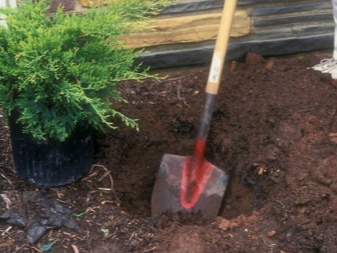

Site selection and preparation
The choice of the site and soil requires special responsibility when replanting thuja. The correctness of determining the most suitable place for a tree is a guarantee of its comfortable growth in a new territory. The main factors in choosing are the following.
- Thuja is a light-loving plant, buildings, tall structures, trees should not be near the place of its growth. These elements of the site cause the formation of a shade, due to which the plant can lose its attractive appearance. It is also worth noting that being in direct sunlight for a long period of time leads to dehydration of the thuja. It is better to opt for a place where partial shade is created at noon.
- Draft is a negative factor, which is considered detrimental to this plant.For this reason, it is worth protecting the thuja from the cold wind; in some cases, you can additionally build shelters for it.
- A favorable soil for the growth of thuja is considered to be clay, sandy loam or marsh. It is not worth planting on nourished soil. A suitable choice for a tree is a turf substrate, to which you need to add coarse sand or peat.
Nearby groundwater, which has a detrimental effect on the root systems of many plants, is not considered critical for thuja. In many cases, in such a place with good drainage, the tree feels great.
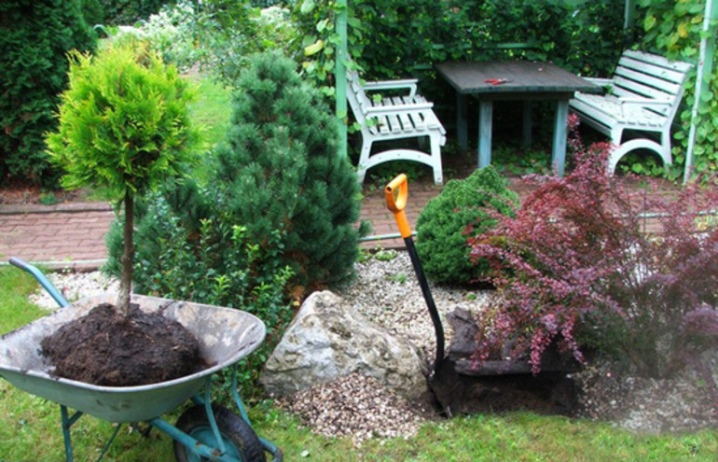
How to replant a tree?
After the site for planting thuja has been selected, they begin to move the plant from one place to another. When transplanting an adult tree, you can follow the following step-by-step instructions.
- First of all, the gardener needs to properly dig a hole, the dimensions of which should correspond to the dimensions of the plant roots. Do not make a hole that is too large or small. Standard sizes are 0.7 by 1 m.
- Then they dig out the thuja from the soil at the previous place of growth. This stage is considered quite responsible, since you will have to try not to harm the plant. In order not to injure the tree, it is required to step back 0.4–0.5 meters from the trunk and pierce the soil around it. In this process, it is better to use a shovel that has a pointed working part.
- If you want to transplant an adult tree with a piercing, you should do it in advance, 12 months before the start of the procedure for digging up the plant. This event allows the thuja to form shoots on the roots closer to the trunk. Also, advance stitching is a guarantee that the plant can be removed from the soil along with a lump of soil, while the roots will retain their shape and will not fall apart into fractions. If the thuja has several trunks, then they can be neatly divided.
- The tree must be pry off with a garden fork and pulled out along with the soil.
- It is better to transport the dug out plant on a garden cart. In this way, damage to the root system and soil crumbling on the roots can be avoided.
- In a pit that has been prepared in advance, it is necessary to pour fertilizers, ground wood ash.
- The root system with a lump of earth is placed in the hole, each of the roots is straightened by hands.
- The hole must be filled to the brim with a nutrient mixture, which includes sand, peat, garden soil.
- The earthen surface must be compacted, tamped and watered. You need to stop watering at a time when moisture will no longer be absorbed into the ground.
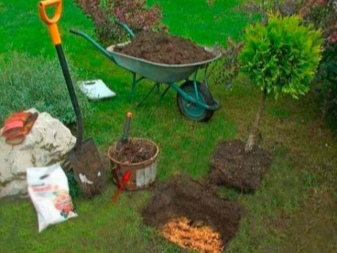
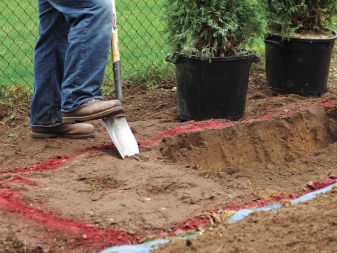
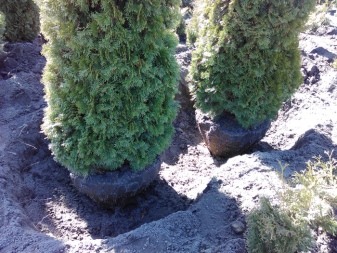

Thus, we can say that the transplant of the thuja to the new place is complete.
Further care
Despite the fact that this tree does not need special care, some activities are still required. Watering the thuja requires special attention. It needs to be watered once every 7 days. If the weather is hot and dry outside, then the number of waterings should be increased. The land near the thuja needs to be weeded out, while you should not immerse the tool deeply so as not to harm the roots of the plant.
This tree needs periodic sprinkling. For such an event, you can use a hose and water the needles with it.
Sprinkling helps moisturize the air and the plant itself, eliminate dust and prevent the development of fungal infections.
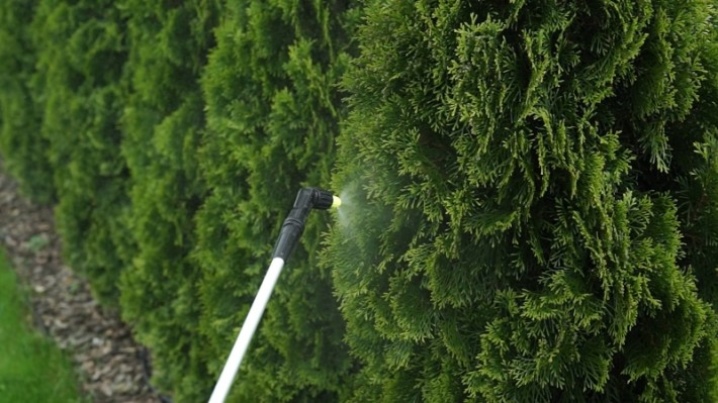
In summer, thuja should be fed with fertilizers of mineral or organic composition. Also, do not forget about preventive measures that help protect the tree from diseases and insect attacks. For this purpose, it is sprayed with fungicides and insecticides.
In the autumn period, the thuja must be prepared for the winter season so that its branches do not break off under the snow mass. To do this, the tree is tied with little force so as to press the branches against the trunk. Sanitary pruning will not be superfluous. If there is little rainfall in the fall, then the thuja is watered abundantly with water, the earth around it is mulched.
As soon as spring comes, it is worth removing the mulch in stages. The three-year old thuja is fed with fertilizers.
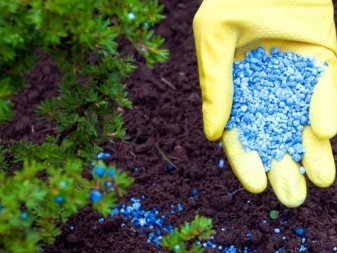
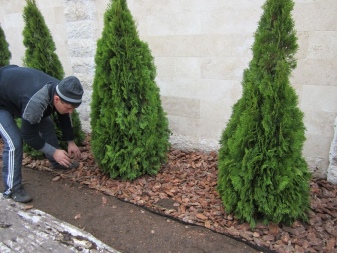
For information on how to properly transplant thuja, see the next video.



































































The comment was sent successfully.